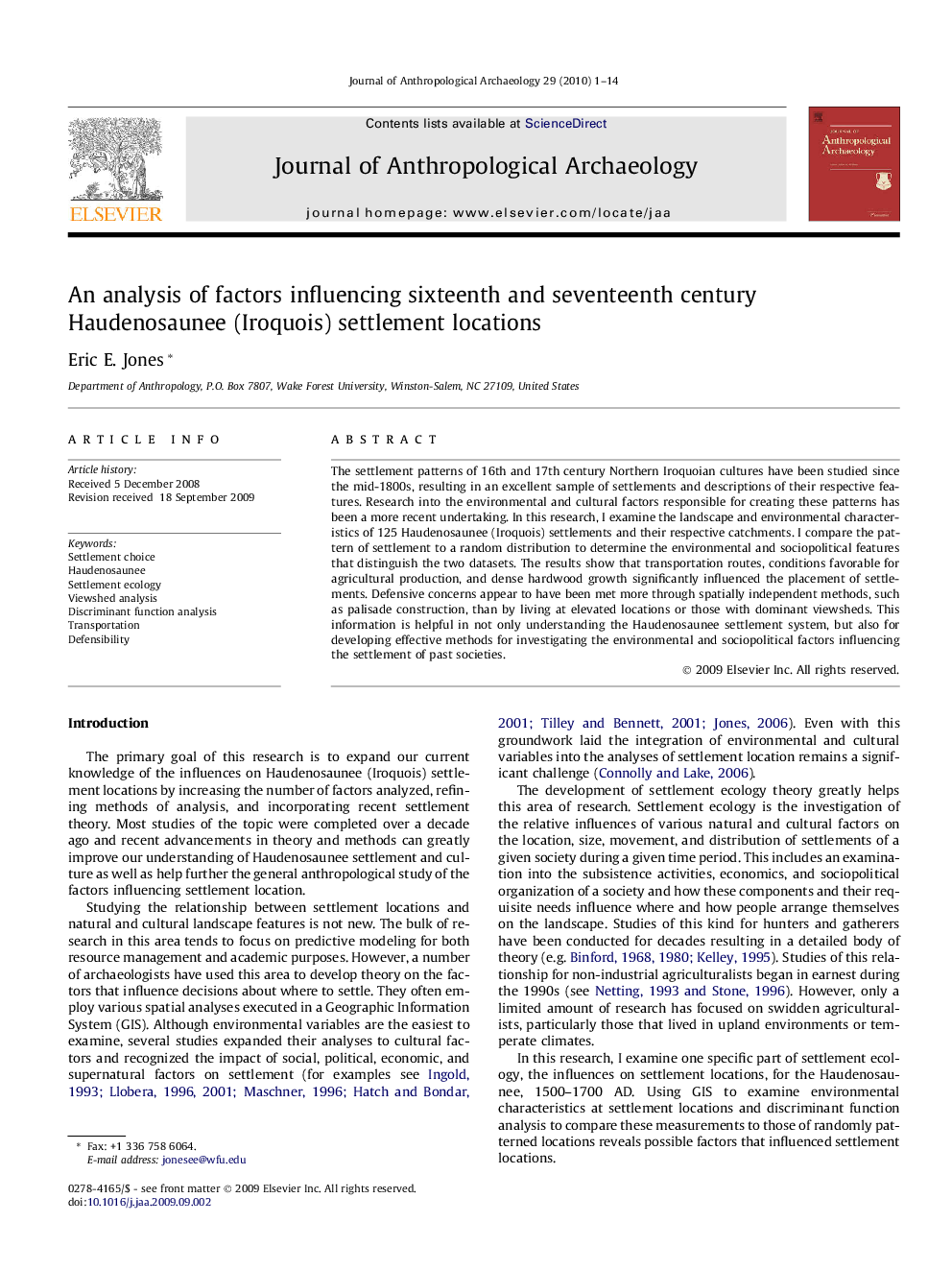| Article ID | Journal | Published Year | Pages | File Type |
|---|---|---|---|---|
| 1035076 | Journal of Anthropological Archaeology | 2010 | 14 Pages |
Abstract
The settlement patterns of 16th and 17th century Northern Iroquoian cultures have been studied since the mid-1800s, resulting in an excellent sample of settlements and descriptions of their respective features. Research into the environmental and cultural factors responsible for creating these patterns has been a more recent undertaking. In this research, I examine the landscape and environmental characteristics of 125 Haudenosaunee (Iroquois) settlements and their respective catchments. I compare the pattern of settlement to a random distribution to determine the environmental and sociopolitical features that distinguish the two datasets. The results show that transportation routes, conditions favorable for agricultural production, and dense hardwood growth significantly influenced the placement of settlements. Defensive concerns appear to have been met more through spatially independent methods, such as palisade construction, than by living at elevated locations or those with dominant viewsheds. This information is helpful in not only understanding the Haudenosaunee settlement system, but also for developing effective methods for investigating the environmental and sociopolitical factors influencing the settlement of past societies.
Related Topics
Social Sciences and Humanities
Arts and Humanities
History
Authors
Eric E. Jones,
